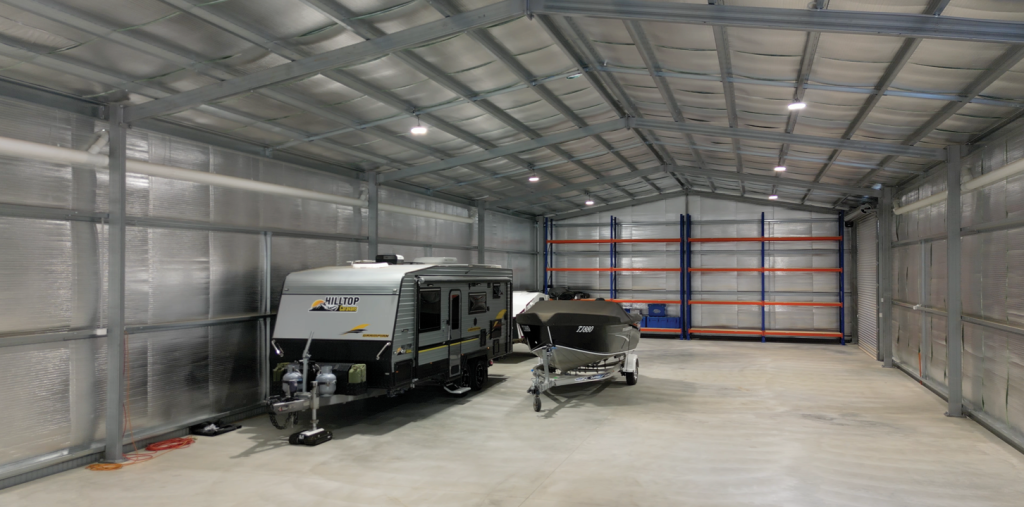
A shed is often seen as an extension of your home, offering valuable storage space and an additional area for recreation and relaxation. However, since most sheds are constructed from steel, they are vulnerable to extreme temperatures, condensation issues, and even fire risks. Without insulation, sheds can become unbearably hot in the summer and freezing in the winter, making it uncomfortable and impractical for extended use.
Insulating your shed is a simple yet effective solution to these challenges, ensuring a comfortable and usable space throughout the year. Whether you use your shed as a workshop, home office, hobby space, or for storage, adding insulation enhances its functionality and longevity.
Let’s discover more about why insulation is so important.
The Key Benefits of Insulating Your Shed
- Year-Round Comfort – Insulation helps create a more pleasant indoor environment by reducing temperature extremes. This makes the shed a comfortable place to work, relax, or pursue hobbies, regardless of the season.
- Thermal Protection – By minimising heat transfer, insulation helps maintain a more consistent internal temperature. This is especially useful for sheds used as workshops, home offices, or storage spaces, as it prevents sudden temperature fluctuations that could damage tools, electronics, or other sensitive items.
- Energy Efficiency and Cost Savings – Proper insulation minimises the need for excessive heating or cooling, leading to lower energy bills if you have installed any electrical appliances like heaters or air conditioners in your shed.
- Condensation Control – Sheds are prone to condensation, which can lead to mould growth, rust, and damage to stored items. Insulation helps to reduce moisture buildup, protecting both the structure and its contents.
- Fire Safety – Certain insulation materials offer fire-resistant properties, adding an extra layer of safety and reducing fire risks, particularly important for sheds built within bushfire prone areas.
When Is the Best Time to Insulate Your Shed?
The ideal time to install insulation is during the construction phase of the shed. Integrating insulation at this stage ensures a seamless installation, reducing costs and improving overall efficiency. While it is possible to retrofit insulation into an existing shed, this process is often more time consuming and expensive due to the need for modifications and additional labour.
Types of Shed Insulation
There are various types of insulation materials available, each offering unique advantages. At All Sheds, our most commonly used options include:
Sisalation
Sisalation is a reflective foil insulation that helps reduce condensation and prevent water drips, making it an excellent choice for sheds used to store valuable or moisture sensitive items. While it offers some thermal benefits, its primary function is moisture control.
Air-cell
Air-cell is a foam based insulation known for its high thermal resistance and condensation control. It is versatile and can be installed in both the walls and the roof, making it an excellent all round option for heat regulation and moisture management.
Blanket Insulation
Blanket insulation is a popular and cost-effective option for reducing heat transfer in sheds. It helps maintain a more stable internal temperature, keeping the shed cooler in summer and warmer in winter. However, since blanket insulation is primarily designed for use in roofing, it is not suitable for wall installation, which may limit its overall coverage.
Insulating your shed is a worthwhile investment that enhances comfort, protects your belongings, and improves energy efficiency. When constructing a new shed, choosing the right insulation material can make all the difference in ensuring a durable and functional space.
If you’re unsure about the best insulation for your needs, the All Sheds team are here to help you determine the most suitable option for your new shed. Contact the team to start your new shed journey.
